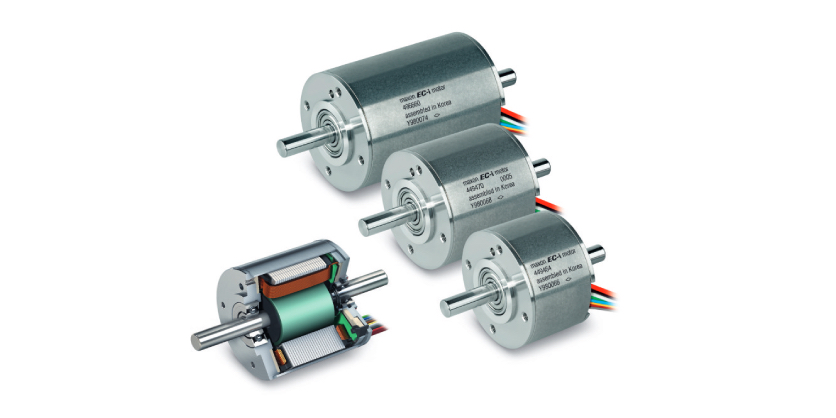A Study of Motor Dynamics and Motor Dynamism: Basic to Advanced Concepts
February 28, 2023

Motor dynamics and motor dynamism are essential topics in the field of electromechanical systems, which deal with the study of the behavior and performance of electric motors. The study of motor dynamics and motor dynamism is crucial for the design and analysis of motion control systems, as well as for the control of AC and DC motors.
Basic Concepts:
The basic concepts of motor dynamics and motor dynamism include the study of the physical principles involved in the operation of electric motors. This includes the principles of electromagnetic induction, electrical circuits, and mechanical systems. In addition, the basic concepts also include the study of motor modeling, the control of electric motors, and the calculation of torque, inductance, and back electromotive force (Back EMF).
Advanced Concepts:
The advanced concepts of motor dynamics and motor dynamism include the study of the relationship between mechanical and electrical power, rotor position, and mechanical time constant. This also involves the analysis of the rotor time constant, transfer function, and frequency response of electric motors.
AC & DC Motors:
DC motors are electric motors that use direct current (DC) to generate motion. DC motors are widely used in industrial, commercial, and residential applications. There are several types of DC motors, including brushed DC motors, brushless DC motors, and stepper motors.
AC motors are electric motors that use alternating current (AC) to generate motion. AC motors are widely used in industrial, commercial, and residential applications. There are several types of AC motors, including induction motors, synchronous motors, and single-phase motors.
The study of AC & DC motors involves the analysis of the performance and behavior of these motors under different operating conditions.
Codifying Motor Dynamics:
Motor dynamics refer to the mathematical description of the motion of electric motors. The study of motor dynamics involves analyzing the relationships between the electrical inputs and mechanical outputs of an electric motor.
Motor dynamics can be codified using mathematical models. These models describe the relationships between the electrical inputs and mechanical outputs of an electric motor. The most commonly used model is the d-q model, which separates the motor into two components: the direct axis (d) and the quadrature axis (q). The d-axis represents the motor’s rotational velocity, while the q-axis represents the torque produced by the motor.
Calculating Motor Dynamics:
The calculation of motor dynamics involves determining the values of the d-q model parameters. This can be achieved through a variety of methods, including numerical analysis and experimental testing. The most commonly used method is the identification of the parameters through experiments, such as the step response test and the steady-state response test. The step response test involves applying a step change in the motor’s input and measuring the resulting output, while the steady-state response test involves applying a sinusoidal input and measuring the steady-state response of the motor.
Improving Motor Dynamics:
There are several ways to improve the motor dynamics of an electric motor. One approach is to optimize the motor design. This involves optimizing the size and shape of the motor components, such as the rotor and stator, to improve the motor’s performance. Another approach is to control the motor using advanced control algorithms, such as linear quadratic regulators (LQRs) and model predictive control (MPC). These algorithms allow for real-time optimization of the motor’s inputs to improve its performance.
Improved motor dynamics can have a range of benefits, depending on the context of the requirement.
Some of the most common benefits include:
- Increased efficiency: When motors operate more smoothly and efficiently, they require less energy to perform the same tasks. This can lead to cost savings and reduced environmental impact.
- Improved performance: Motors with better dynamics can often operate at higher speeds, accelerate more quickly, and provide more precise control over their movements. This can be especially important in industrial or manufacturing settings where precise movements are required.
- Greater reliability: Motors with improved dynamics may be less prone to breakdowns and failures. This can reduce maintenance costs and downtime and improve overall productivity.
- Improved safety: Motors with better dynamics may be able to operate more safely, with less risk of accidents or injury. For example, a robotic arm with improved motor dynamics may be able to move more smoothly and avoid collisions with objects or people.
- Enhanced functionality: Motors with improved dynamics may be able to perform new or more complex tasks that were previously not possible. For example, a drone with better motor dynamics may be able to carry heavier payloads or fly in more challenging conditions.
In conclusion, motor dynamics provide a mathematical description of the motion of electric motors. The study of motor dynamics involves analyzing the relationships between the electrical inputs and mechanical outputs of an electric motor. The motor dynamics can be codified using mathematical models and can be calculated through a variety of methods. Improving motor dynamics can be achieved by optimizing the motor design and controlling the motor using advanced control algorithms.
Overall, improved motor dynamics can provide significant benefits across a wide range of applications, from industrial manufacturing to consumer products to intralogistics and beyond.
Related Story
Electromate Inc. Recognized as Canada’s Most Admired Corporate Cultures for 2020
Canada’s Most Admired Corporate Cultures 2020 were announced today, and Electromate was recognized as a national winner in the Emerging Market category. This national program, sponsored by Waterstone Human Capital, recognizes best-in-class Canadian organizations for fostering high performance corporate cultures that help sustain a competitive advantage.






